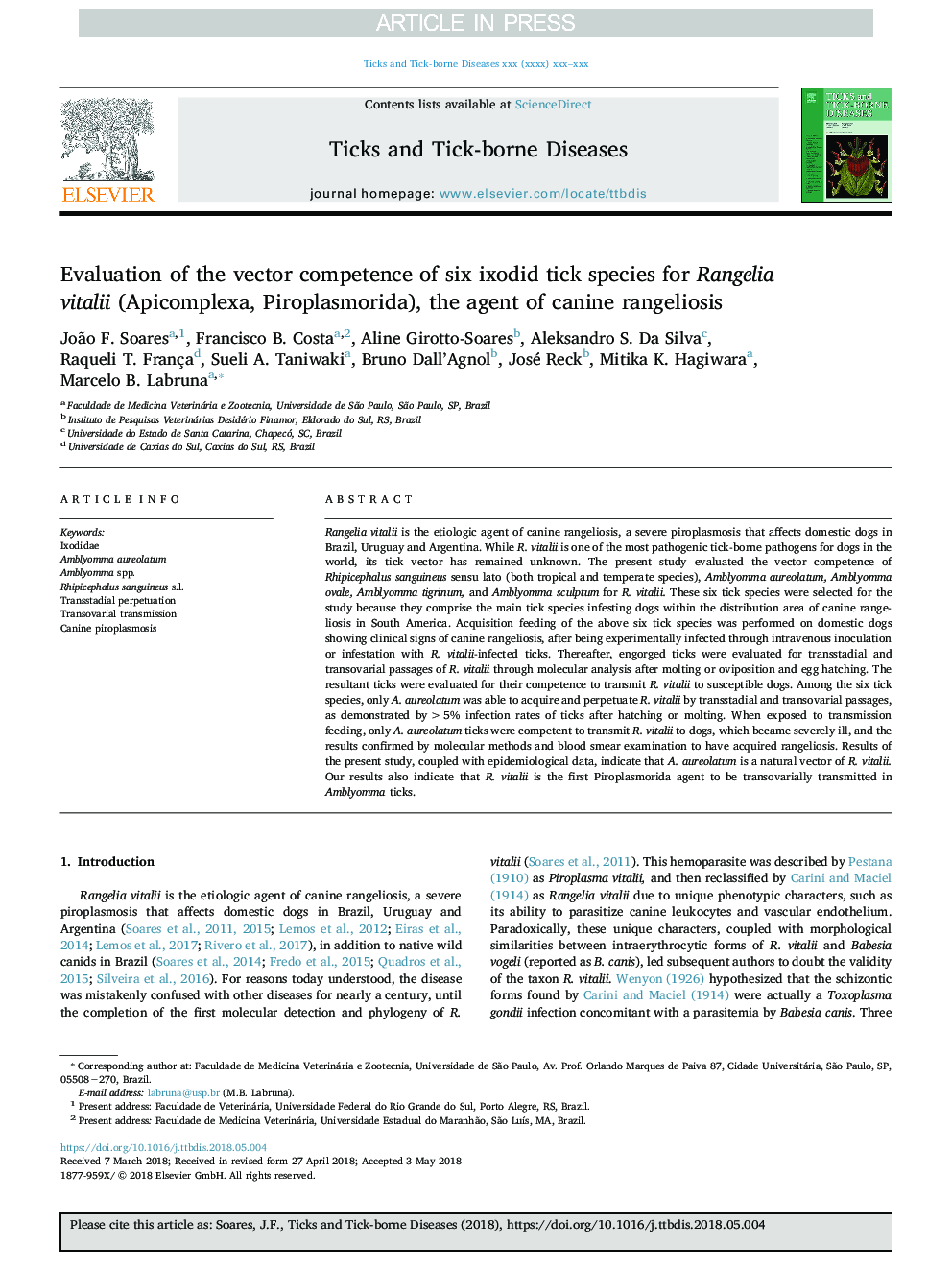| Article ID | Journal | Published Year | Pages | File Type |
|---|---|---|---|---|
| 8507063 | Ticks and Tick-borne Diseases | 2018 | 14 Pages |
Abstract
Rangelia vitalii is the etiologic agent of canine rangeliosis, a severe piroplasmosis that affects domestic dogs in Brazil, Uruguay and Argentina. While R. vitalii is one of the most pathogenic tick-borne pathogens for dogs in the world, its tick vector has remained unknown. The present study evaluated the vector competence of Rhipicephalus sanguineus sensu lato (both tropical and temperate species), Amblyomma aureolatum, Amblyomma ovale, Amblyomma tigrinum, and Amblyomma sculptum for R. vitalii. These six tick species were selected for the study because they comprise the main tick species infesting dogs within the distribution area of canine rangeliosis in South America. Acquisition feeding of the above six tick species was performed on domestic dogs showing clinical signs of canine rangeliosis, after being experimentally infected through intravenous inoculation or infestation with R. vitalii-infected ticks. Thereafter, engorged ticks were evaluated for transstadial and transovarial passages of R. vitalii through molecular analysis after molting or oviposition and egg hatching. The resultant ticks were evaluated for their competence to transmit R. vitalii to susceptible dogs. Among the six tick species, only A. aureolatum was able to acquire and perpetuate R. vitalii by transstadial and transovarial passages, as demonstrated by >5% infection rates of ticks after hatching or molting. When exposed to transmission feeding, only A. aureolatum ticks were competent to transmit R. vitalii to dogs, which became severely ill, and the results confirmed by molecular methods and blood smear examination to have acquired rangeliosis. Results of the present study, coupled with epidemiological data, indicate that A. aureolatum is a natural vector of R. vitalii. Our results also indicate that R. vitalii is the first Piroplasmorida agent to be transovarially transmitted in Amblyomma ticks.
Related Topics
Life Sciences
Agricultural and Biological Sciences
Animal Science and Zoology
Authors
João F. Soares, Francisco B. Costa, Aline Girotto-Soares, Aleksandro S. Da Silva, Raqueli T. França, Sueli A. Taniwaki, Bruno Dall'Agnol, José Reck, Mitika K. Hagiwara, Marcelo B. Labruna,
